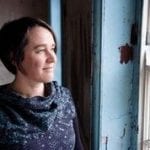“I aim to align my research approach with the spirit of “re-wilding”, by searching for methods to experience different “data sets” by adopting a non-anthropocentric viewpoint by implementing methods derived from my artistic practice. … My primary way into this is through processes of listening. One example being durational, underwater listening with hydrophones.”
Re-wilding Water Data, Kathy Hinde blog post
Further to my aims outlined in this initial blog post, during the data fellowship, I tried to explore the possibilities of working with data whilst aiming to circumnavigate extracting / sorting / categorising / counting / cataloging / comparing or owning. To ‘be with’ data, to embrace ‘flux’ and sit with indeterminacy, echoing the ever-changing, shapeshifting nature of water.
Within my wider creative practice, I work with open scores and create installations with generative behaviours, alongside building musical instruments that are intentionally designed so they cannot be fully controlled, in order to provoke an evolving, emergent dialogue and re-negotiation when performing and improvising.
I often practice field recording, and the act of focused listening for long durations invokes an intimacy with a location, possessing qualities similar to meditation. My awareness is heightened; as are my concerns around environmental issues. I try to be still and quiet, but in particularly quiet locations, I become aware of my own breath and heartbeat. I am present, and never separate from this act, and therefore part of it, and also influencing it.
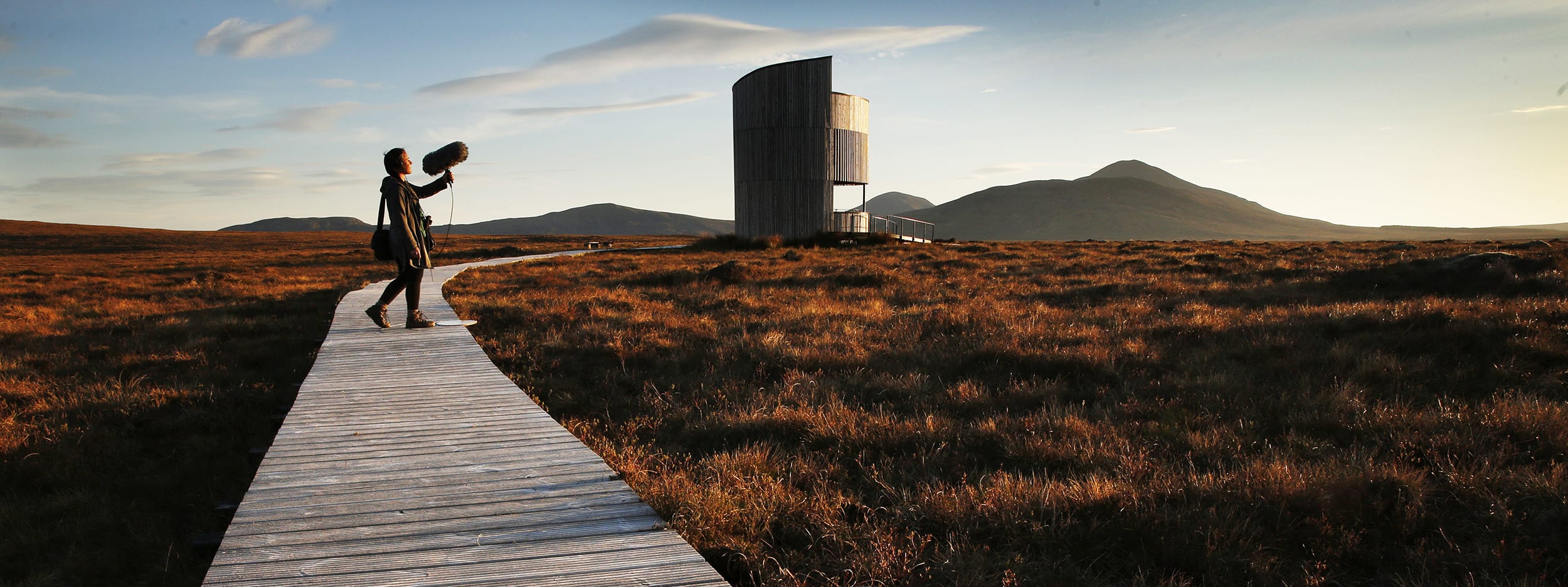
Over the last 6 years I’ve been invited others to join me on underwater listening walks, to share this practice of field recording, as a collective encounter and deeper connection with non-human entities of the world.
When embarking on these collective listening experiences, I often question whether we need to record the sounds. Thinking about ‘non-extraction’ and embracing the live-ness and everchanging nature of water, sometimes it is important to simply listen. The act of recording subtly changes something. I am aware that by recording, I can re-listen later, so perhaps I don’t commit to 100% pure focus in that moment. There is part of me that is monitoring my recording levels, my SD card capacity and remaining battery power. It is a subtly different experience, to listen closely and not record the sounds which may relate to my love of ‘live-ness’ in performance and improvisation, and to embrace the ever-changing non-fixed state of the waterway.
The walks are invitations to listen from an underwater perspective by following the route of a stream or waterway. In urban environments, this can often highlight re-routing and culverting that has happened as a result of urban development. Our watery pilgrimages have led us to the outskirts of cities, privileging often ignored areas; the edge-lands. Alongside this proposition to navigate in a different way, these walks are an invitation to listen from an often inaccessible perspective; from underwater; to have an encounter. I became aware of this analogy to the “encounter” from Rob St John, a sound artist who has also practices hydrophonic listening.
“For Deleuze (1968 [1994]: 139), the encounter is “something in the world [that] forces us to think”, an affective force which causes a break or rupture in our habitual ways of interacting with the world, and forces us to undergo reflection or reconfiguration of these interactions.”
Rob St John. Chapter 9, Fluid-Sound, Water, Creativity and Meaning: Multidisciplinary Understandings of Human-water Relationships. Liz Roberts and Katherine Philips, 2018,
This rupture, new perspective, and break to a habit can remind us to consider that data can be read, filtered and applied in multiple ways and to be alert to that.
Environmental monitoring and data collection from waterways is crucial for the health and upkeep of blue spaces, and to make important cases for policy improvements. I propose that listening, pausing and spending time with our waterways can also contribute to the health of blue spaces in many positive ways.
Fellow data fellow, Natasha Nicolson, explores the idea of a ‘break’ in the data flow, in order to think afresh, along with some satisfyingly appropriate watery metaphors.
“Data is naturally slippery and hard to get hold of. By nature data is live, it moves fast, is constantly updating and is vast in scale, potentially overwhelming. (Watery metaphors, river and ocean fit it well). These characteristics mitigate against a critical understanding of data collected, including establishing its value, use and ethical aspects. In my research I’ve looked into the use of signal-blocking materials to design ‘analogue’ spaces (where mobile digital comms signals are blocked), for example, a design for a citizens assembly space for deliberative democracy. This is one example of a mechanism to stop or catch the flow of data, to stop the rush of digital pings and nudges, to make space and time to think and reflect, either collectively or individually, before returning to the immersive world of ‘in data’ with new insights and fresh eyes. In this context I think analogue devices and objects, as well as spaces, are interesting mode-changers.”
Natasha Nicolson, https://sensewithdata.org
The invitation to listen in ‘live’ to an ever-changing dataflow, in the moment without ‘capturing’ it, can also create an awareness, and conscious focus that resists the overwhelming constant bombardment of data.
I began to name these underwater listening walks ‘Deep Listening Walks’ in reference to Pauline Oliveros, who made a practice of Deep Listening by encouraging:
- unbiased listening
- unfiltered listening
- opening ones ears to the world
Oliveros proposed non-anthropocentric viewpoints between the human and the non-human, without hierarchy. Her series of open scores, “Sonic Meditations” places listening as a fully embodied pursuit, of attending to sounds and to the world. One score reads, in its entirety,
“Take a walk at night. Walk so silently that the bottoms of your feet become ears”
Sonic Meditations, Pauline Oliveros
I first including the phrase ‘deep listening’ in relation to walks I held in the Flow Country (research for a commission from Cryptic) in the far north of Scotland, home to Europe’s largest area of blanket bog. Peat is formed from water-logged mosses and is ecologically important as a hugely effective carbon sink, alongside supporting a highly biodiverse ecosystem of many rare species.
I invited people to ‘listen at different depths’, to consider the time that is held within peat. 10m of peat takes approximately 10 000 years to form. What might it mean to listen together for long durations, to contemplate this depth, to imagine this large timescale, and think further into imagining geological time? To stretch the imagination towards the unknowable, I am reminded of Timothy Morton’s concept of the hyperobject, a term he coins to explain objects so massively distributed in time and space as to transcend localisation, such as climate change.
“… how to deal with the existence of hyperobjects, products such as Styrofoam and plutonium that exist on almost unthinkable timescales … these materials confound our limited, fixated, self-oriented frameworks.”
Timothy Morton, The Ecological Thought, 2012, p19
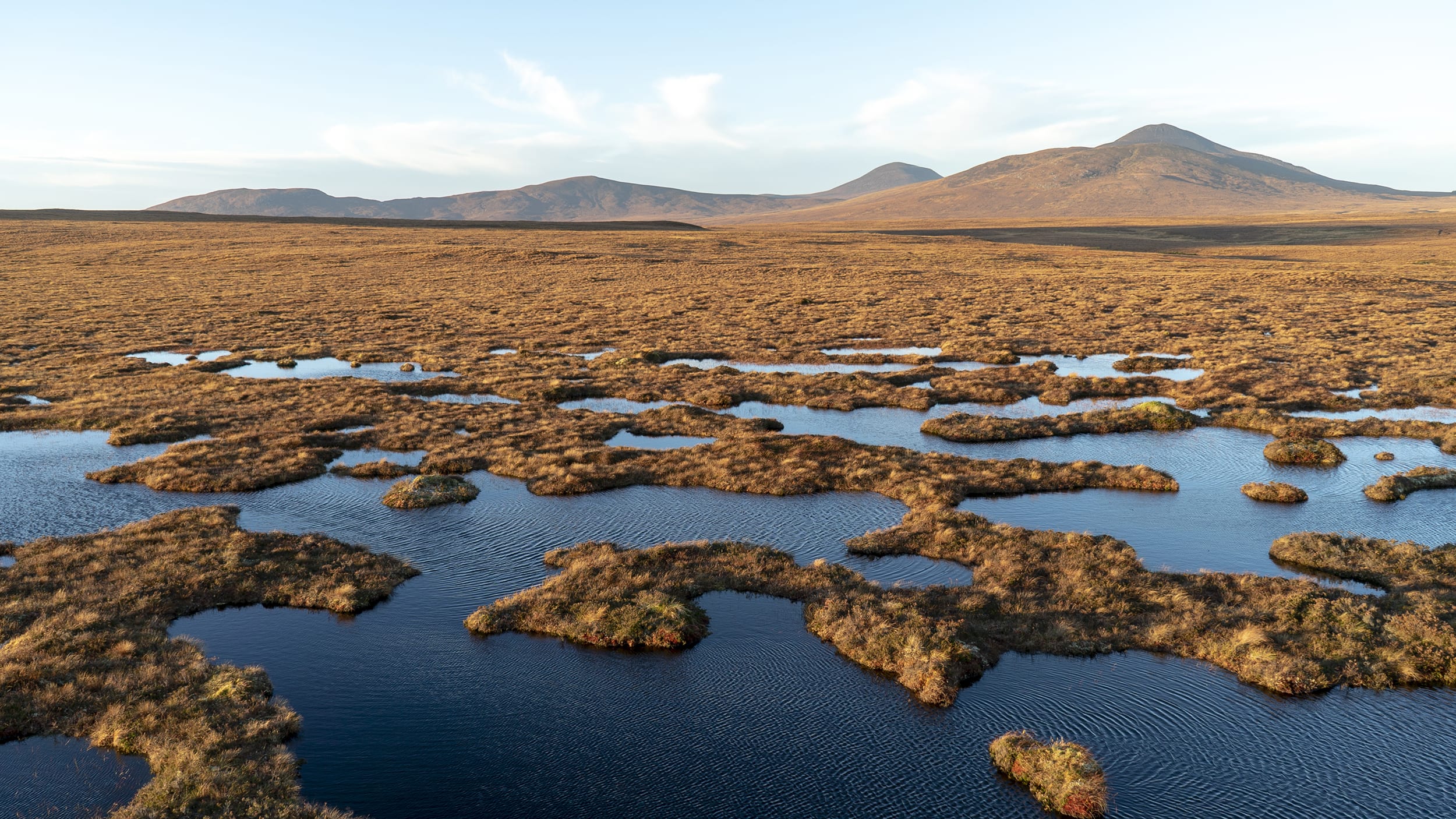
During the Data Fellowship I held two ‘Deep Listening Walks’ to pause, reflect and listen to Bristol from an underwater perspective at the point where the floating harbour meets the Avon Gorge. The Bristol Channel has the second largest tidal range in the world and many interventions keep Bristol’s relationship with water in balance, and prevent the city centre from flooding. Both walks took place during the Covid-19 pandemic, the first in autumn 2020, socially distanced on wireless headphones for Control-Shift Festival; the second in February 2021, during a full lockdown, broadcast as an ‘on-location’ live stream incorporating multiple microphones and an array of cables, adapters, dongles and a wearable camera mount, commissioned for Outlands Network online festival The Joyous Thing 2.
The live stream ran 30 minutes either side of sunset, on a waning full moon, at a spring tide. Sliding between the boundaries of day and night, underwater and over water, at an edge point of the city where the urban meets the wildness of the Bristol channel constantly shifting through huge tidal changes every day. Extracts from the event below…
Some extracts from the research trips I made to the area…
Some more sound recordings and photographs from Deep Listening Walk at Control Shift Festival, October 2020, where we were joined by Ben Wookey from the Harbour Master team, who shared his extensive knowledge of the floating harbour, locks, sluices, stop gates and more, with us. (Spot some more Data fellows!) …
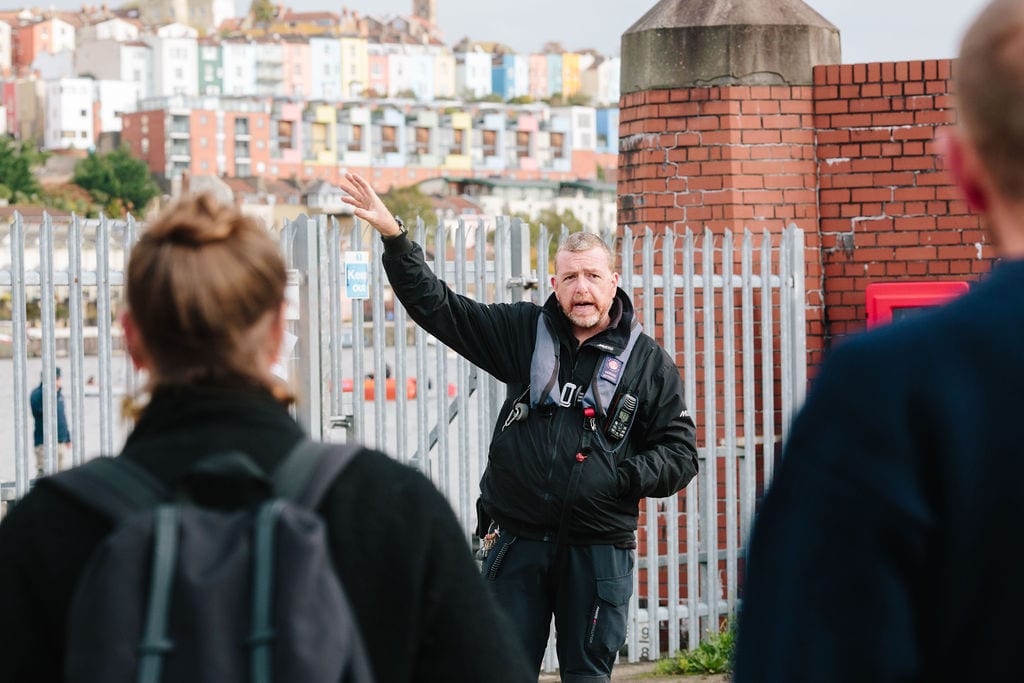
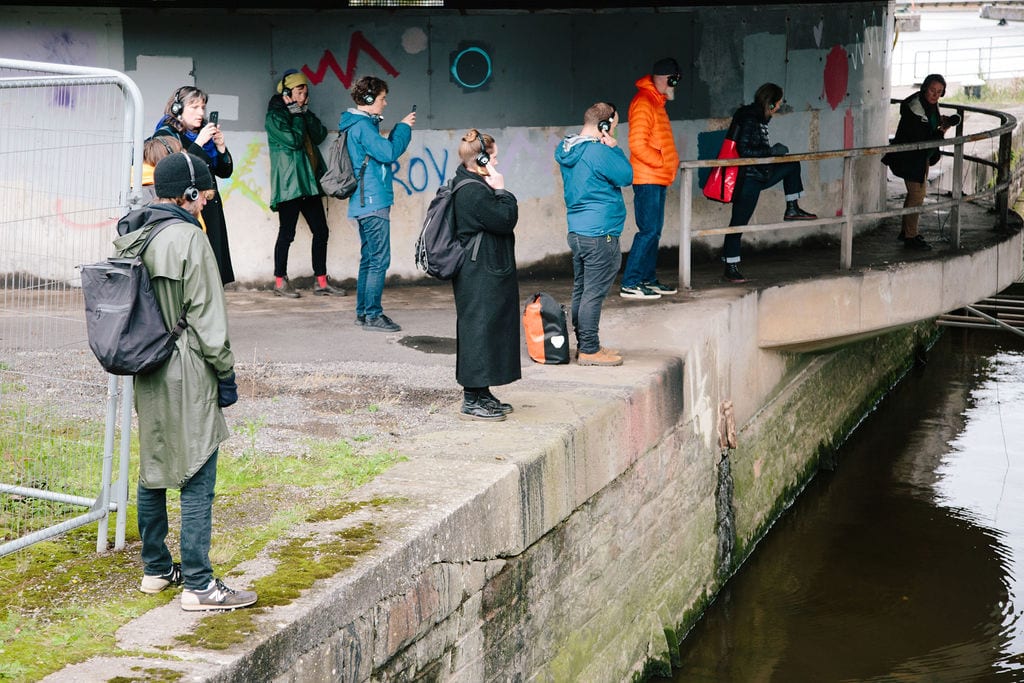
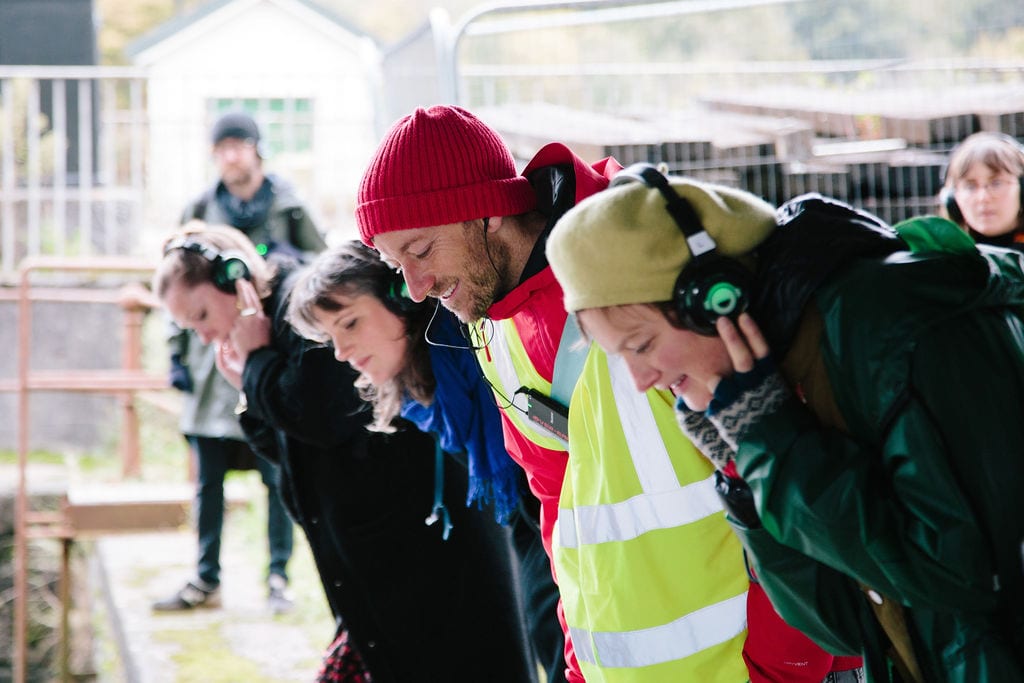
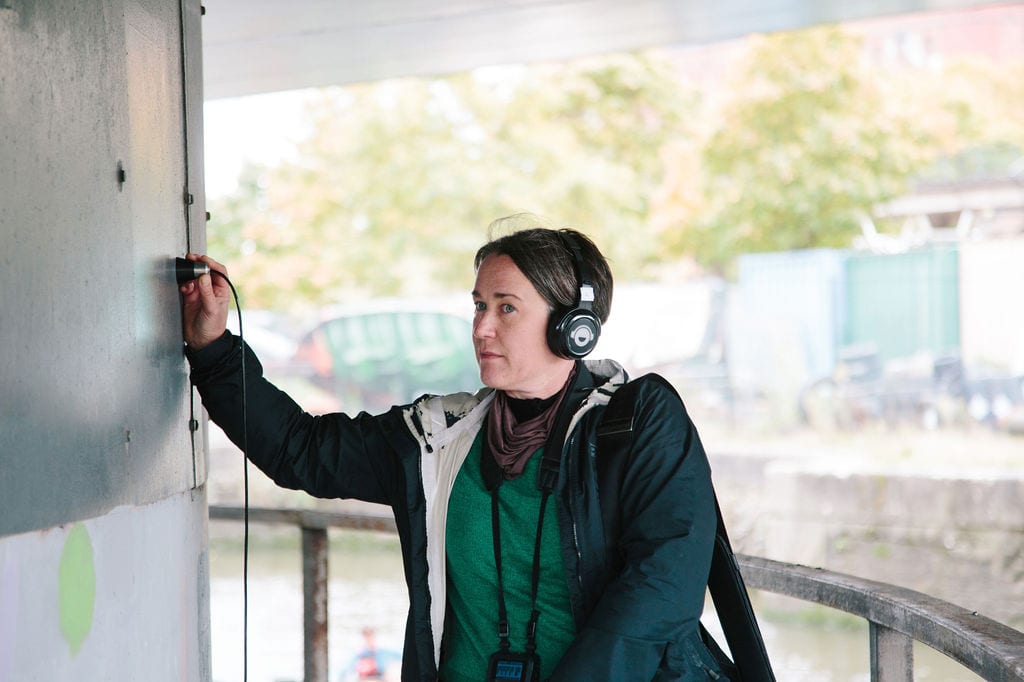
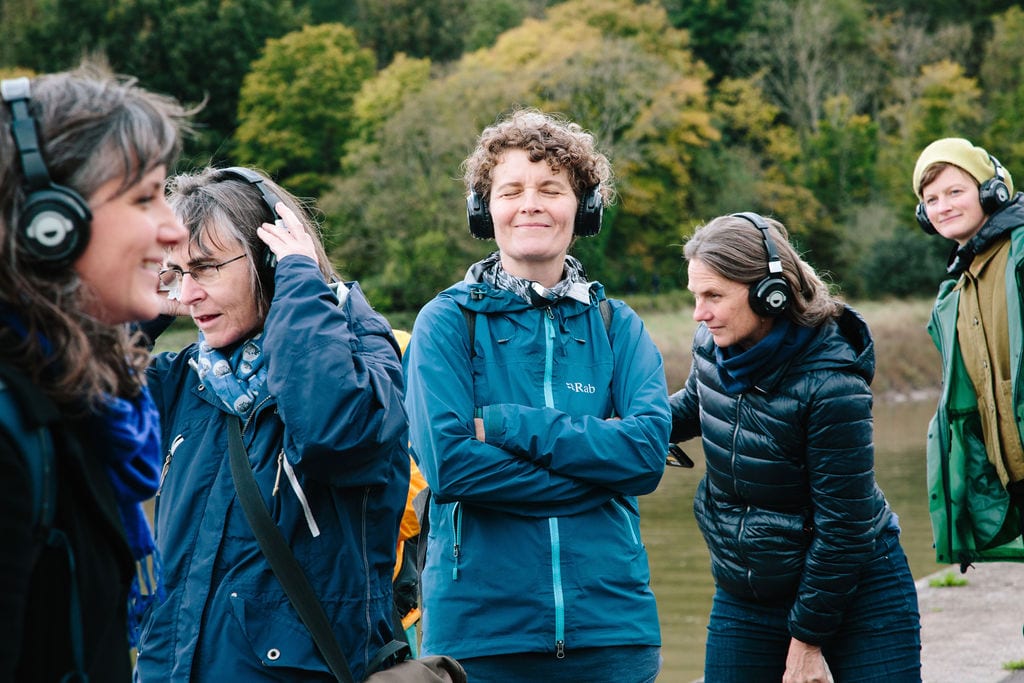
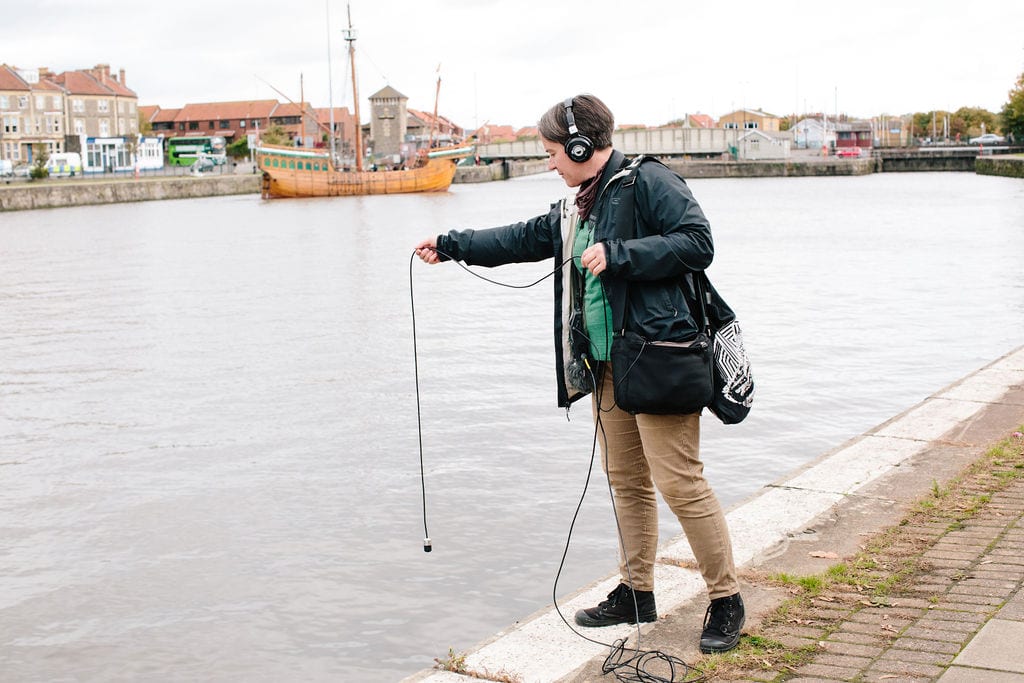
References:
Deleuze, G. (1968/1994) Difference and Repetition, trans. P. Patton. New York: Columbia University Press.

